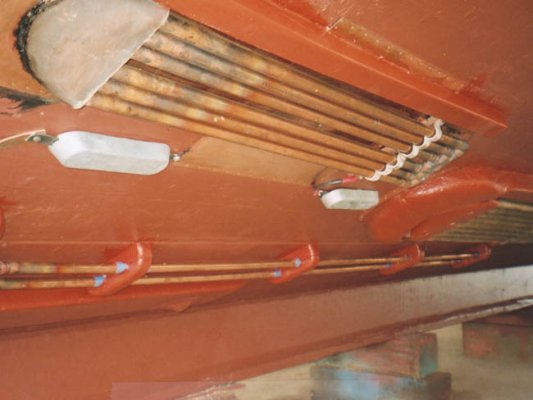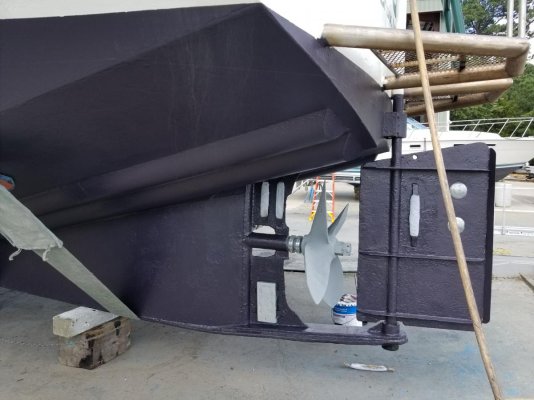Delfin
Grand Vizier
- Joined
- Jan 20, 2010
- Messages
- 3,821
Hand in hand with switching to sea water cooling, we are switching back to wet exhaust. Like you, we never had soot flakes, but we did get a coating of soot buildup around the exhaust exit. It covered all the instruments, and looked like hell. And cleaning was a major pain in the butt./ I had to climb up on the hard top, then climb the stack, and hand scrub every instrument and every branch of the tree. And all the scrum and rinse water showered down on the rest of the boat, covering it in black sooty water, necessitating a complete wash of the boat. Wet exhaust soots too, but it's MUCH easier to clean a transom and sides of the boat than to climb the stack, hand scrub everything, then the whole rest of the boat.... Never again. To me, dry stack and keel cooling was a big mistake that I won't make again.
I have both. The CAT is dry stack keel cooled, the genset is keel cooled, but raw water exhaust through a lift muffler. Personally, cleaning the dry stack exhaust residue is easier than cleaning the black film all along the waterline from the genset exhaust, but to each his own. I just like the fact that there is zero maintenance on a keel cooled, dry stack setup other than cleaning which I do anyway. No zincs, no raw water, no raw water pumps, no exchangers, no impellers, no nothing. Just start and go.


